Gabion Retaining Wall Erosion Control, Slope Stability & Protection
Gabion Retaining Wall
Soil erosion on steep slopes is slowed down by making use of retaining walls. They help build useful land and keep slopes from collapsing because of pressure from gravity and rain. How stable and effective the walls are depends a lot on proper soil friction and good drainage.

Why Choose Retaining Walls?

We offer professional design support and recommendations tailored to your project's requirements.
Double Twisted Gabion or Welded Gabion Options
Galvanized or Galfan Steel Wires
ASTM Compliant: Meets A974, A975, A641, A90, A185 standards
Suitable for Major Construction Projects
Special Discounts for Large Orders
Project References Available for Bidding
ISO Certified Manufacturing Facility
CAD or 3D Drawings Supplied for Design & Construction
Available Types
Hexagonal Gabions
Welded Gabions
Gabion Retaining Wall
Configuration
These retaining walls can take either a smooth front or step front form when being designed. Safety and stability are improved in both types by including a small batter angle. A variety of trials have revealed that retaining walls are more stable when their batter angle is considered.
If you prefer your gabion wall with a smooth front face, position it at a 6 to 10-degree batter angle for up to 5-meter walls. Walls with a step front have to be built at a 4 to 6-degree tilt to the maintained hillside. Because of the batter, the soil below must first be graded and firmly pressed.
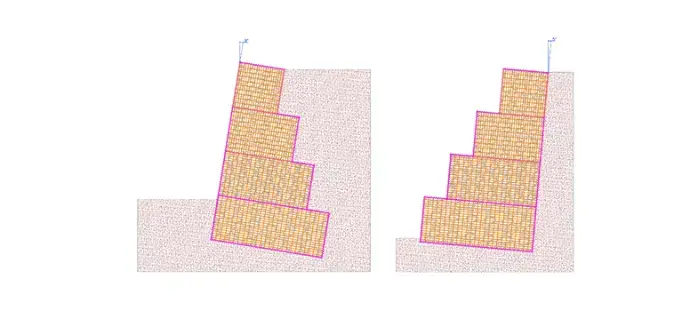
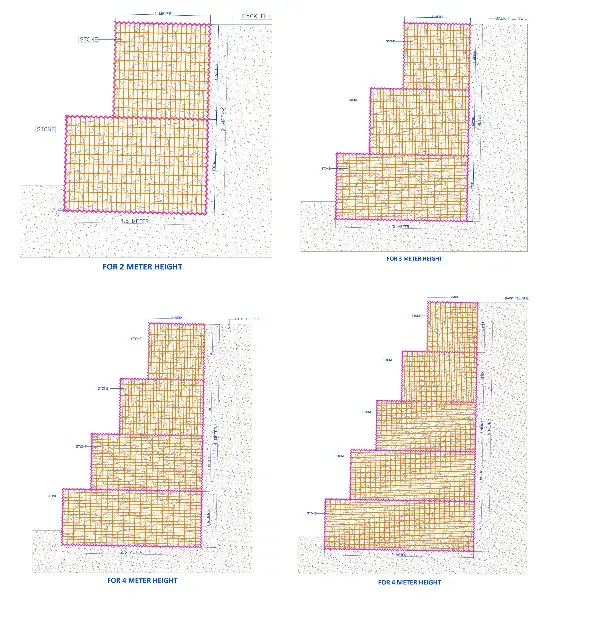
Dimensions
To maintain stability for Gabion Retaining walls, you should make the base width equal to one-third the height of the wall. A recommended standard for success is to design beams with at least twice as much height as base width. Hitech Gabion strives to make certain your projects last for years to come. We always design the base to be 2/3 of the wall height to ensure the wall stays strong and minimize the chance of failure. Gabion gravity walls are able to support structures up to 9 meters, but the best results are gained if the walls are only 5 meters high. When heights pass 5 meters, we suggest using MSE slope protection walls.
Any one box on top of the base should be no more than 1 meter tall. It depends on the height of the wall how many boxes you will need. For instance, a 3-meter wall would be composed of 3 boxes, one meter each.
The size of the gabion boxes’ width depends on what you choose for the base width. Those using crates should keep each box from the top at least 0.5 meters away from any boxes stacked before it. The importance of this challenge increases when retrofitting retaining gravity walls using step front faces.
Ready to Stabilize Your Space? Discover Gabion Retaining Walls Today.
Key Factors for Long- Lasting Gabion Retaining Wall
Foundation
Gabion Retaining walls are usually built on a slope prepared from graded soil, using a layer of non-woven fabric beneath. The extra layer helps strengthen the base, lowers settlement and makes draining water simpler. A deeper 400 mm base for the wall is suggested to help secure it even more.
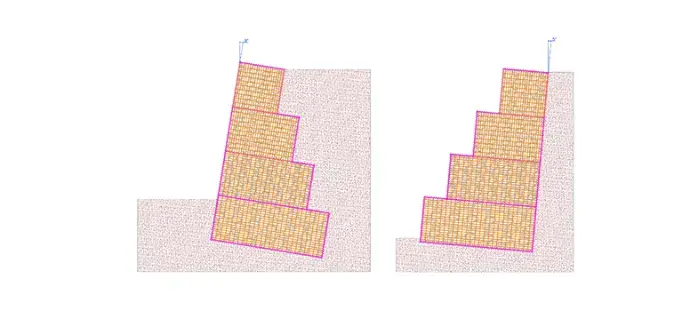
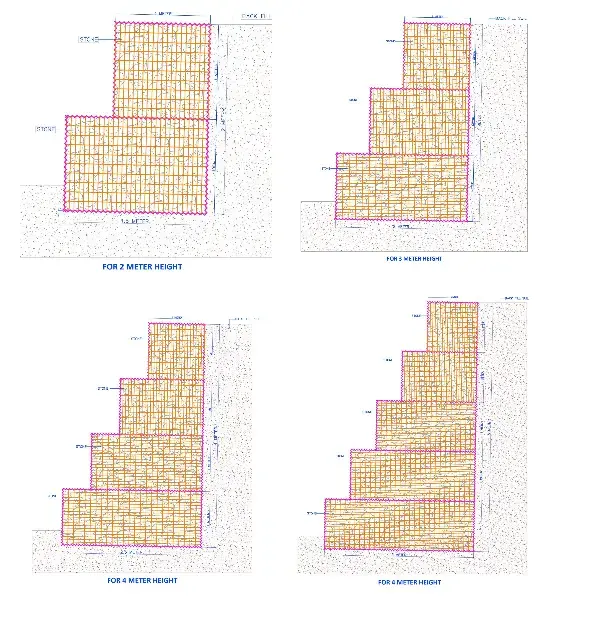
Foundation below Grade
Stones inside gabion retaining walls make them useful for erosion control deep underground as well. If you want them to stand tall, bury them down about twice as long as you think the erosion will go. This covering of Gabion strengthens the foundation of the wall to keep dirt and gravel from washing away.
This layer is laid with barely any digging, so it is installed right on top of the ground. Simply adding a filter fabric helps to ensure your soil will last for a long time. Should you need to build a base underwater, it’s not a problem. It may be made ahead on a barge and then placed slowly in position.
If you desire, we provide a PVC finish coating on the gabion boxes or ren mattress as an extra measure for protection beneath water. It is very important that your retaining wall always resists and stands firm, facing any type of weather.
Shape control
Welded mesh gabion walls and double twisted mesh gabion walls differ in their strengths and weaknesses when serving as retaining walls.
Thanks to how they are made, welded mesh gabion walls are very strong. All wires used are around 4 mm in size and each is welded at each junction, making a strong structure that supports a lot of stress. Due to this firmness, the wall doesn’t bend or warp when pressurized from outside.
At the same time, double twisted mesh gabion walls can flex, so they fit well where land moves over time. Because of its double twisted mesh design, the wall can bend safely and resist damage from scouring.
Overall, welded mesh gabion walls are preferred when strict structure is needed, as they are stable and strong. Such walls which consist of double twisted gabion meshes, handle shifts and are very strong in landscapes with lots of movement.
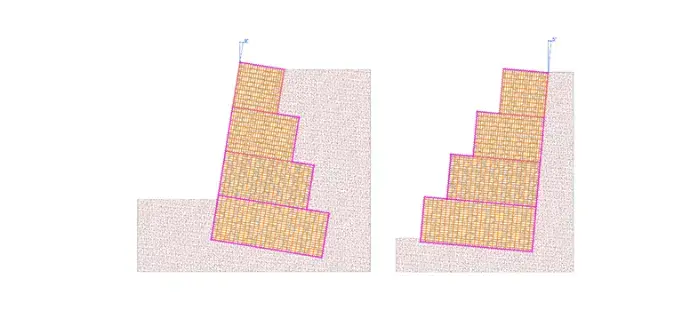

Filter Fabric and Back fill
Although there are many ways to backfill gabion walls, making sure the job is done right is critical. A failure to pack the backfill properly may cause the wall to sink, move sideways or become weaker than it should be. Proper density and stability of backfill depend on following recommended rules for its compaction.
The filter fabric in any gabion construction stops soil from being washed away through the gaps between rocks inside the boxes. Picking the correct filter fabric matters a lot because incorrect picks can lead to soil loss and a change in the wall’s backing. Which type of fabric is used for the filter depends on the kind of material used as backfill for the retaining wall.
Advantages of Our Gabion Retaining Walls
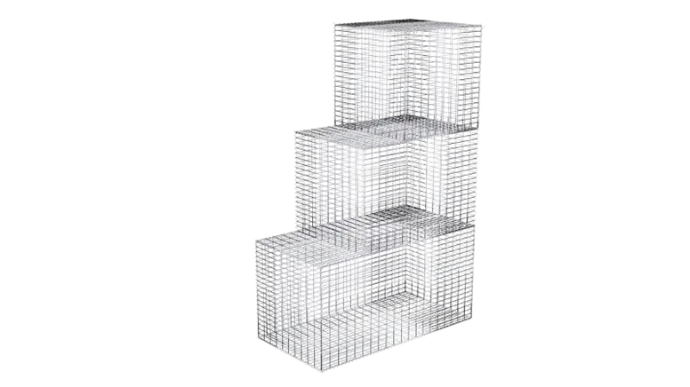
- Your steel will have good protection against corrosion due to the galvanization process.
- For strength underground, gabion boxes coated in PVC are buried and provide support.
- The strength of the wire results from edges that are reinforced, making it more durable.
- Water constantly empties from the soil through draining, relieving plant roots of too much pressure.
- Being flexible, woven gabions do not deform and maintain their stability over time.
- Saves Money: Uses what’s close by and can be reused to make the house cheaper.
- Safe for the Environment: Filled with natural materials, not harmful to the environment.
- Warehouse monitoring: They are measured and inspected according to standards before being sent.
Applications of Gabion Retaining Walls
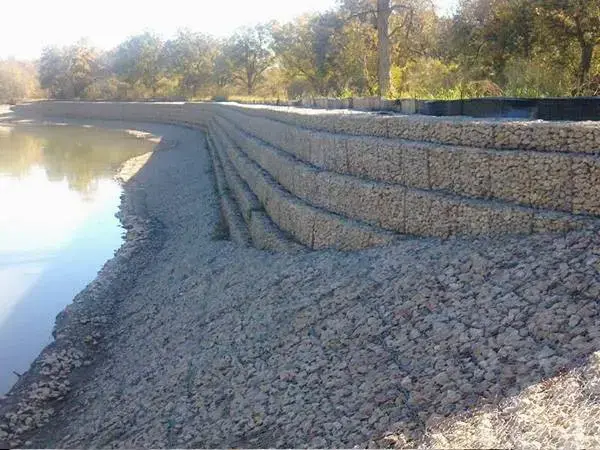
River or Flood Control
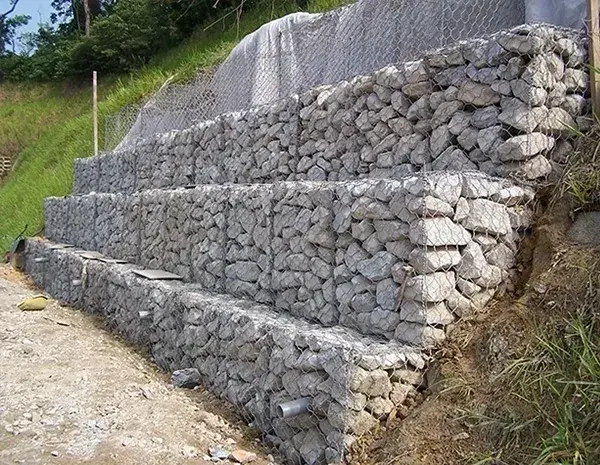
Slope Retention
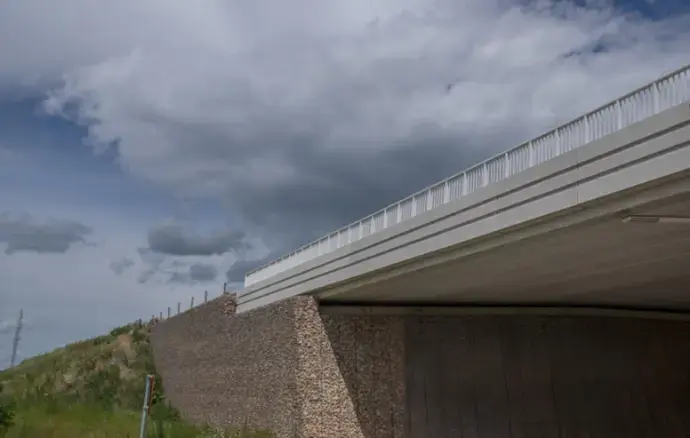
Roadway and Bridge Protection

Riverbank and Dam Protection
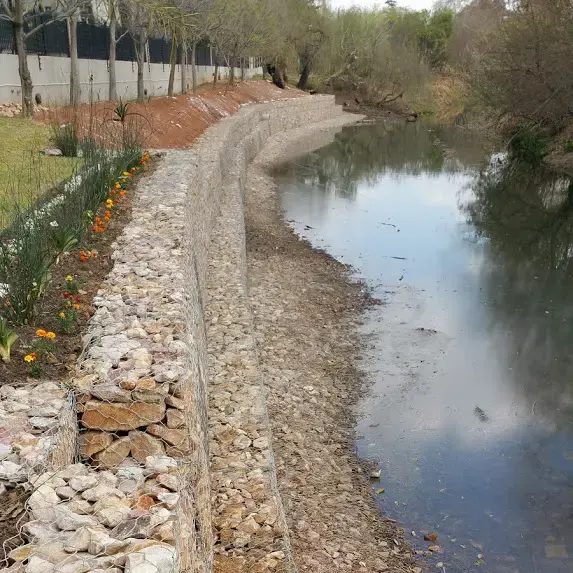
Channel Paving

Gravity Retaining Walls
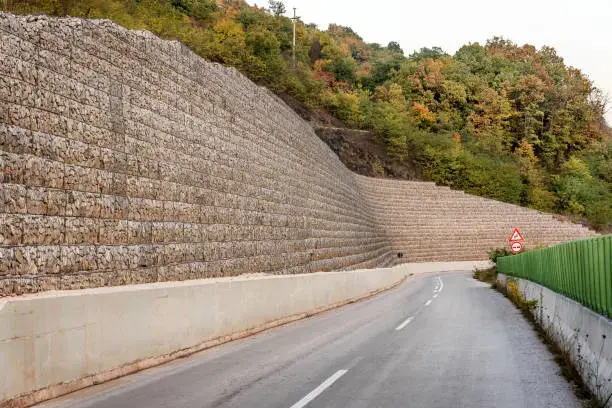
Highway Embankments
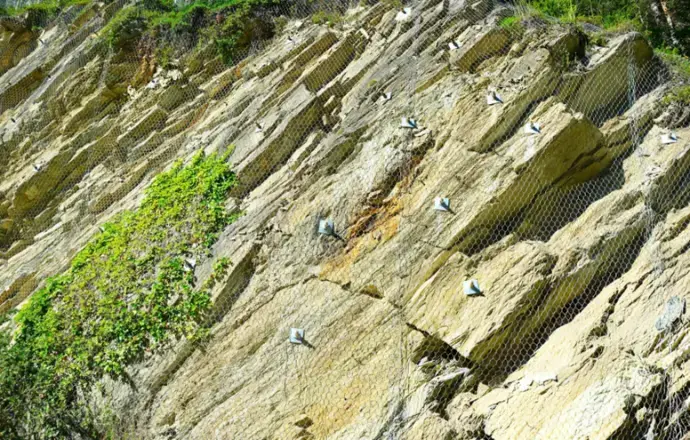
Rockfall Protection
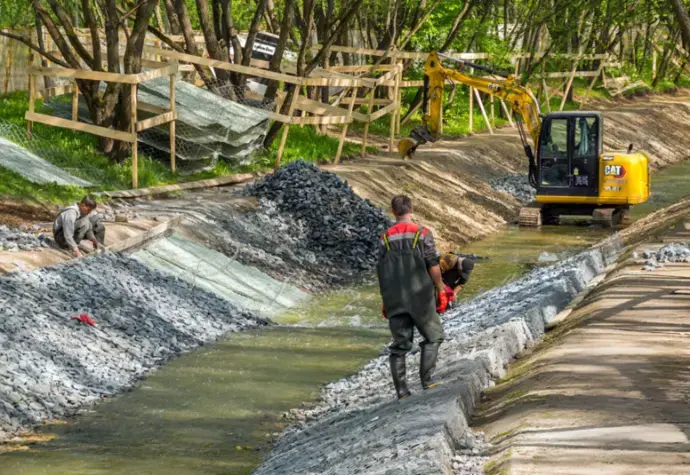
Water and Soil Conservation
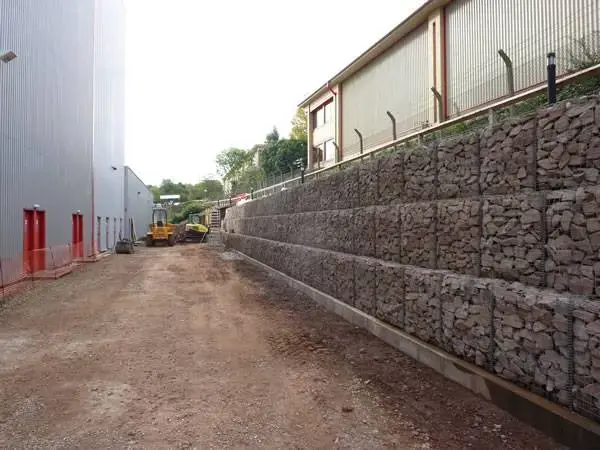
Building Construction

Steep Hill Stability

Building and Bridge Stability
Ready to Start Your Project? Contact Hitech Gabion Today!
Whether you're working on government infrastructure, large commercial developments, or high-traffic areas, HiTech Gabion has the expertise and products to meet your needs. Contact our team for more information or to place your order